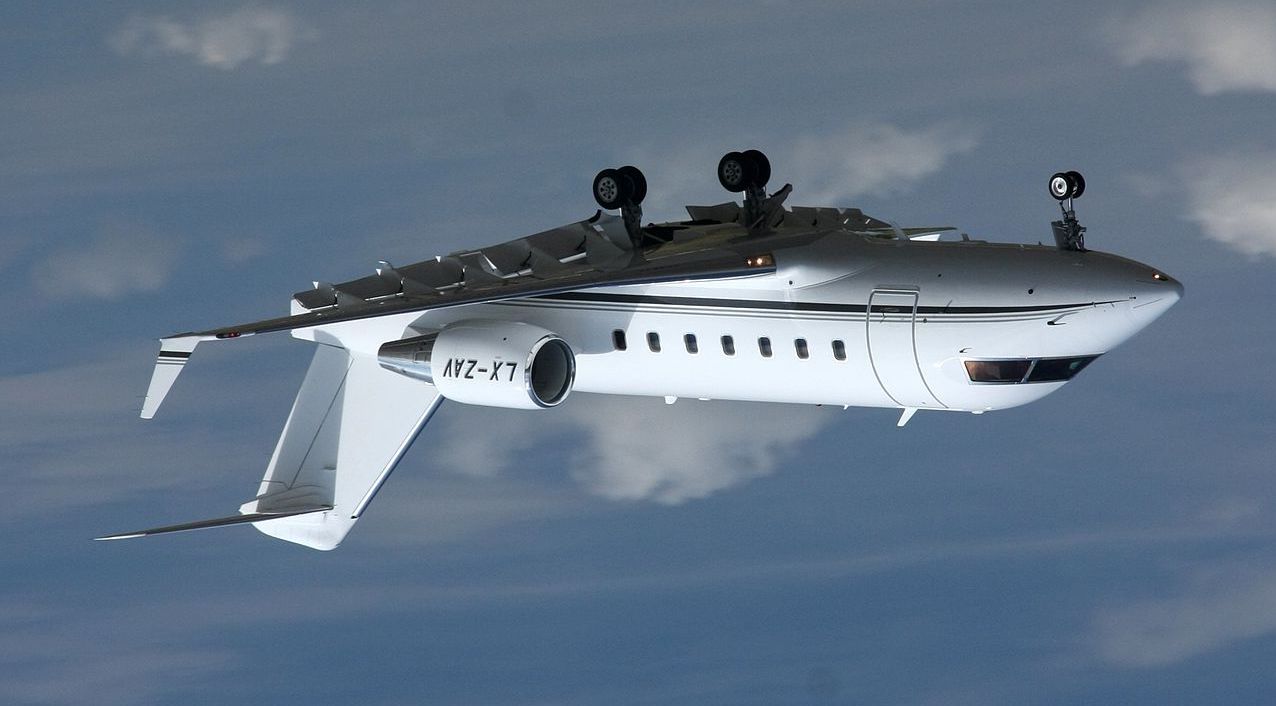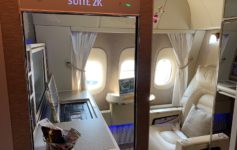Wake turbulence from an Emirates A380 traveling from Dubai to Sydney flipped over a private jet, forcing an emergency landing in Muscat and rendering the aircraft scrap metal.
Back in the days of “Channel 9” (ATC communications) on United Airlines, I’d often here the phrase, “Caution: wake turbulence”. More than a decade ago, I also learned about the concept of wake turbulence during my Air Force flight training, but never gave it much thought. Here’s a brief refresher, then we’ll move to the incident.
What is Wake Turbulence?
Per Wikipedia:
Wake turbulence is turbulence that forms behind an aircraft as it passes through the air. This turbulence includes various components, the most important of which are wingtip vortices and jetwash. Jetwash refers simply to the rapidly moving gases expelled from a jet engine; it is extremely turbulent, but of short duration. Wingtip vortices, on the other hand, are much more stable and can remain in the air for up to three minutes after the passage of an aircraft.
Emirates A380 Flips Over Challenger 604

While danger from wake turbulence is most heightened during takeoff and landing, it can take place at anytime. An Emirates A380, enroute from Dubai to Sydney flying at 35,000 feet, was heading southwest over the Arabian Sea. A German registered Canadair Challenger 604 passed in the opposite direction 1,000 feet underneath.
After passing the super jumbo jet, the flight crew lost control of the aircraft. The jet quickly entered an uncontrolled roll pattern, flipping over 3-5 times and rapidly losing 10,000 feet. Thankfully, the crew were able to regain control of the jet, but the engines had burned out.
An emergency was declared and the aircraft made if safely to Muscat. Nine passengers were onboard and several were injured. The plane “received damage beyond repair and was written off”.
According to the Aviation Herald, this was not the first such occurrence.
CONCLUSION
Should you be worried about wake turbulence when you fly? Not if you are on a larger commercial airliner–adequate precautions are almost always taken. But if on a private jet, be careful. Wake turbulence is a force to be reckoned with.
It does make me wonder how they pulled this off–
(tip of the hat to Jeff / image credit: Ronnie Macdonald / Wikimeida Commons)




Hi Matthew, Im an ex 747 Capt and current pilot. They pulled off the above amazing jet-men formation with the super heavy because wake turbulence sinks. The cool dudes were flying above their monster dance partner always, and I imagine laser focused on that!
Wake turb is caused by wing tip vortices that immediately trail back and down (gravity) The air above the aircraft could be silky smooth but immediately below…. massive turbulent air spirals. Ive suffered wake a few times, once in a 4 seat tiny airplane below a BA 747-400, it was a huge jolt despite me “seeing” it coming and frantically descending and turning to avoid it. Does that help?
Off-topic, but I have to say, your font is very hard to read. Too thin! Hurts me eyes…
I was on Delta 1754 from Denver to Los Angeles yesterday, cruising at 34,000 feet. Five minutes after bev service started, the plane too a deep dip to the left. Felt like a 50 degree roll. A lot of people screamed and I had to lift my soda water off of the tray to prevent it from spilling on the passenger next to me. It was terrifying. Captain announced shortly after that that it was wake turbulence from another passing plane. I thought I was done. It took a few minutes to get out of panic mode. Many passengers commented as we debarked that they never experienced that. I hope I never do again.
I can tell you HOW the video in question was pulled off… At NO time were the two guys ever directly behind, and most importantly behind and beneath the massive A-380 wing. The wingtip vortex that is produced by each wing is spun off the wingtip by the differential air pressure being created all flying wing designs. (Low pressure on top and high pressure below the wing caused by the curved or “camber” of an airfoil wing planform. Because the laws of physics dictate that high pressure always go to low pressure, the air (referred to as relative wind) underneath the wing is travelling by the wing at a slightly lower velocity, therefore higher pressure (Bernoullis Principle) and once past the edge tip of the wing, tries to meet the lower pressure air above the wing and causes a spinning vortex off the wingtip. This vortex spins at a tremendous velocity in rotation and sinks approximately 500 feet a minute behind the airfoil as it passes through the air. It is most pronounced (generated) when the generating aircraft is heavy, slow and clean (minimal, to no flaps extended). The A-380 is unusual in the fact that the wing is long than the aircraft is long and produces an enormous amount of lift (I.E. a much tighter, faster spinning vortex). The A-380 (categorized as a “Super Heavy” jet for air traffic separation purposes) vortex spins and stays intact for a much longer period of time behind the airplane. Considering the incident that is noted here, took place approximately one minute after the Bombardier corporate jet passed underneath the A-380 at an approximate speed of 8 miles a minute and each aircraft was at this speed mean that even 16 (approximate) nautical miles behind, still had a vortex of such strength to do this damage. Back to the gentlemen in the video, they never even got close to the “directly” behind nor below area of mass vortex generation of concern. Great video though!